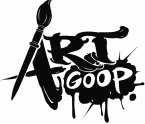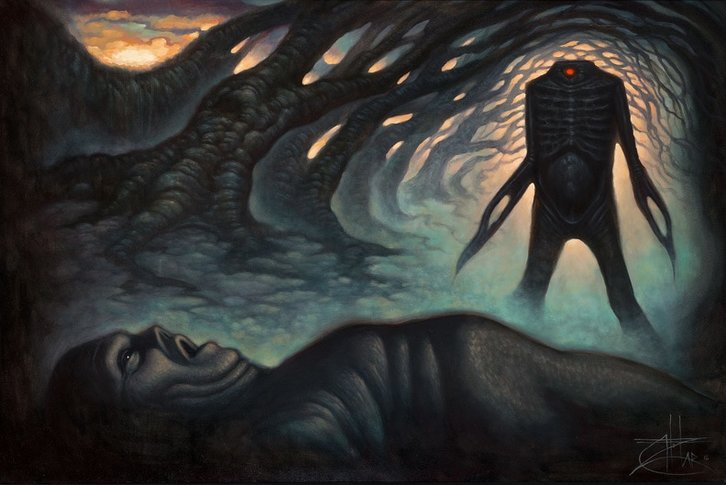|
1. Who were your teachers or influences?
I am primarily self taught. Most of what I learned came from books and experimentation. I also learned a lot by observing my stepfather, Painter James Zar. His studio was in the den of our house so there was always art and art in progress around to look at. My influences were Frazetta, Beksinski, Giger, MC Escher, Dali. Bosch, EC horror comics, horror films, monster toys and much more. 2. What techniques or tricks did you find most useful when learning to paint? I think under painting (sketching the painting in using one color of paint- raw umber, for myself- to get the composition and values correct. This then gets painted over) was a big one for me. My background was rooted in drawing before I started painting so I always felt more comfortable in the under painting stage since it is so similar to drawing. 3. What are 3 key principles of making good art, in your opinion? 1. A solid concept or feeling you want to communicate. 2. Good composition. I think this is really important. A painting should feel comfortable to look at (unless you are intentionally trying to make the viewer feel uncomfortable). A viewer should know exactly where to look and the painting should guide the eye along comfortably. 3. Proper values (lights, darks and mid tones). I think there are a lot more than three, actually! 4. What are the most common mistakes that you see other artists make? Buying into 'starving artist myth' and not embracing the business side of art. No artist wants to deal with business but if you want to make a living with your art, it is a necessity. I didn't want to do it but I was forced to learn. Now I actually kind of enjoy it because it allows me to be more self reliant and more in control of my career. 5. Can you break your painting process down into 10 steps, or less, for us? 1. I do a rough sketch or series of sketches just to get the idea down and figure out the composition and basic values. 2. Next I do a small, quick oil study (usually 5x7") to figure out the color and lay out the groundwork for the big painting. 3. At this point I will do an under painting in raw umber oil paint thinned with OMS (Gamsol is what I prefer for OMS). I basically lay the painting out with emphasis on getting the proper values. 4. Sometimes I paint straight into the wet under painting but I prefer to wait for it to dry first. Either way, at this stage I start blocking in the colors making a concerted effort to focus the large shapes and forms and stay away from any detail. I usually get as far into the painting that I can in one sitting. I use Liquin as my painting medium. This helps increase the flow of the paint and also speeds drying time. Then I let it dry overnight. 5. I evaluate the painting and decide what it needs at this point (I spend a lot of time looking at the painting during the process). Then I start my next sitting, which can include glazing- the painting of transparent colors to 'tint' areas- if I need to push some color one way or another. 6. At this point, I try to focus on detailing and glazing primarily. These are the final touches. 7. When the painting is finished and dry, I coat it with a removable painting varnish. I like to use Gamvar gloss varnish. 6. What colors are currently on your palette? Titanium White, Ivory Black, Raw Umber, Yellow Ochre, Cadmium Scarlet, Alizarin Crimson, Prussian Blue are my main colors. 7. Do you have a paint color or medium or other art-related implement that is indispensable? If so, what is so useful about it? Liquin! I love Liquin because it dries the painting overnight, which is kind of important for the way I paint.
2 Comments
Kevin Jacobs
8/16/2017 12:53:00 am
I love this article by Chet Zar!
Reply
Leave a Reply. |
Art GoopArt Goop is a Q&A for artists by artists. We ask questions designed to examine the techniques and methods of some of the most inspiring artists working today. Categories
All
Archives
September 2017
|


 RSS Feed
RSS Feed